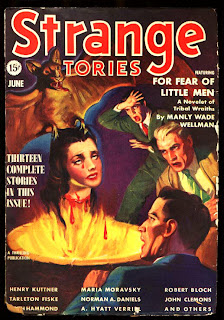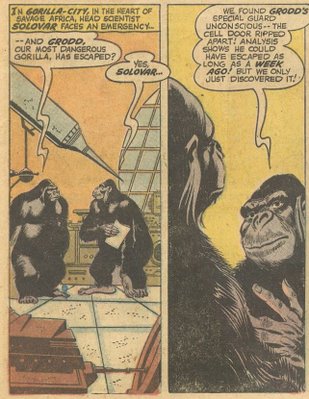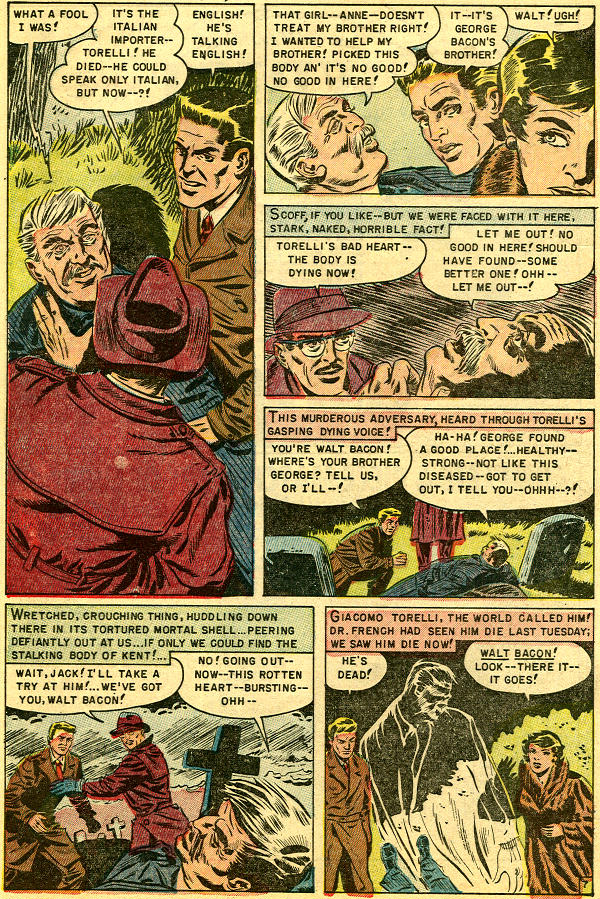 Number 84
Number 84
COVERING UP: Classic Covers of Golden Age ComicsIs Decapitation in Bad Taste?On April 21, 1954, EC Comics publisher Bill Gaines took his place before a Senate subcommittee investigating the excesses of comic books. Gaines took a chance by testifying: No one who watched the U.S. Senate during the period after World War II would have failed to notice the House Un-American Activities Committee hearings by Senator Joe McCarthy, and the Senate's own excesses, ruining lives and careers of people who testified.
Comics had been under fire for many years--just about as many years as they had been popular--and Bill Gaines' father, Max Gaines, had been sensitive to such criticism. His own comic book lines, All-American Comics, with popular characters like The Flash, Wonder Woman, etc., and his new business, Educational Comics, were kept as clean as possible with some pretty strict self-censoring. It wasn't until he died and his son, Bill, took over that Educational Comics became Entertaining Comics and put their stamp on quality in art and story, if not in subject matter.
Crime and horror comics were successful, and were the target of PTA groups and parents. The comics were put under a public microscope and received much criticism.
So it's hard to tell why Bill Gaines put his own neck on the block (ho-ho), unless he had told himself that by dint of a calm testimony and his own sincerity he could convince some publicity-wise senators that as a publisher he felt he wasn't doing anyone any harm. When it came to whether his comics were in good taste, and a copy of
Crime Suspenstories #22 was held up this exchange occurred:
Senator Kefauver: Here is your May 22 issue [
sic]. This seems to be a man with a bloody ax holding a woman's head up which has been severed from her body. Do you think that is in good taste?
Mr. Gaines: Yes sir, I do, for the cover of a horror comic. A cover in bad taste, for example, might be defined as holding the head a little higher so that the neck could be seen dripping blood from it and moving the body over a little further so that the neck of the body could be seen to be bloody.
Ah, poor Bill Gaines. He claimed later he was on dexedrines, a diet pill, and not really responsible for what he said, but when they held up that cover he must've felt his own head under a bloody ax. He knew then that he had been set up, not only by the Senate subcommittee, but by his own publishing practices. It wasn't long before the publication of
Seduction Of The Innocent by Dr. Fredric Wertham, M.D., an anti-comics polemic and a very influential book. The comic book industry felt the heavy weight of public opinion finally crush them, and the Comics Code was born. Unlike the belief of some uninformed fans, the government did not censor comic books,nor were they ever likely to censor them. It would have been clearly unconstitutional to do so, but a self-regulation seemed at the time to be in everyone's (especially the publishers) interests.
I think Bill Gaines was a brilliant publisher by surrounding himself with so much talent. He did that throughout his publishing career and made a tidy living at it. If he had a problem during his EC Comics days it was pushing against public opinion. When the public starts book burnings of your product, when distributors return the boxes unopened because no seller wants to handle your product, then you have failed. You've made a point, but by doing so you have also hurt yourself.
EC is often held up as the benchmark of how good comic books could be, and I'm firmly in that camp. I own many of the original comics, I own the complete hardbound, slip-cased series' of New Trend issues, I own all of the comic-formatted reprints. I'm a solid EC fan, but even jaundiced by my own opinion of how good EC Comics were, I can see where they dug the pitfalls they later fell into.
Oh yeah…EC wasn't the only company to publish decapitation covers. In 1939 the pulp magazine,
Strange Stories had a doozy of a decapitation cover by Norm Saunders.
Click on pictures for full-size images.

In this cover the bad taste guidelines explained by Gaines are fully illustrated, with blood dripping from the neck of the female victim. But that was a pulp magazine, not usually associated with children, and that was the problem with comic books. Their readership was a little young--according to their parents--to be exposed to such things as headless bodies and bodiless heads, whether the publisher decided they were in good taste or not.

































































